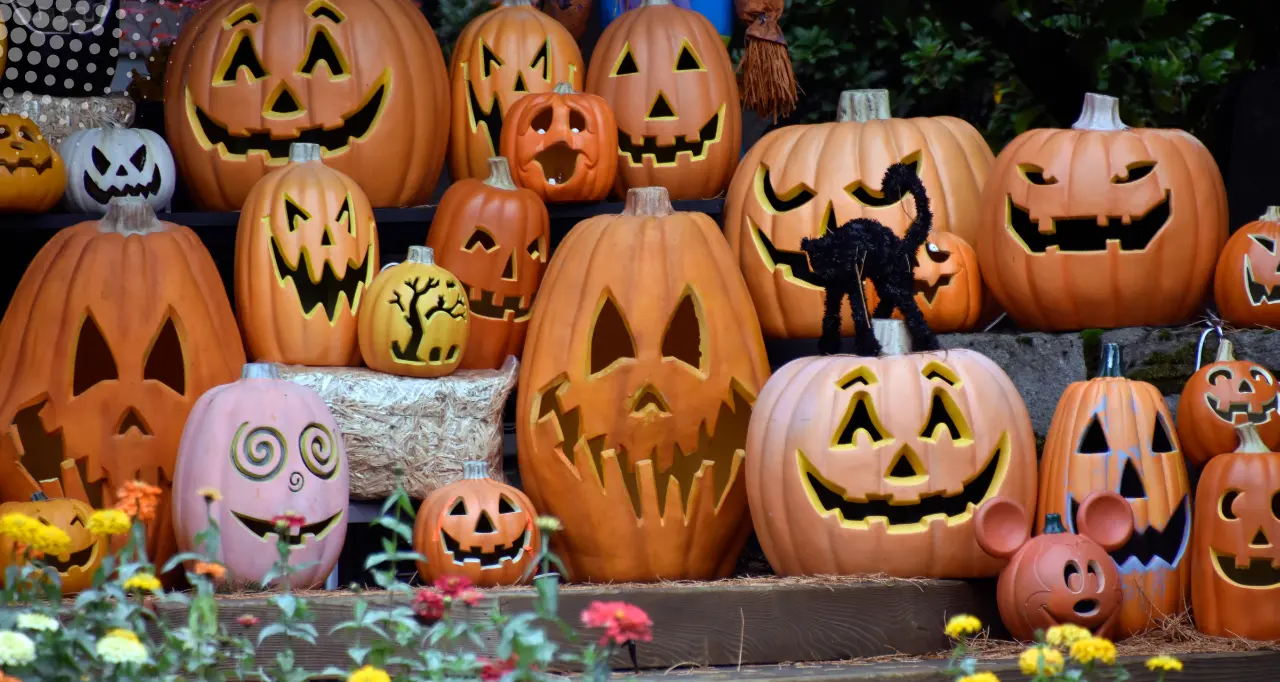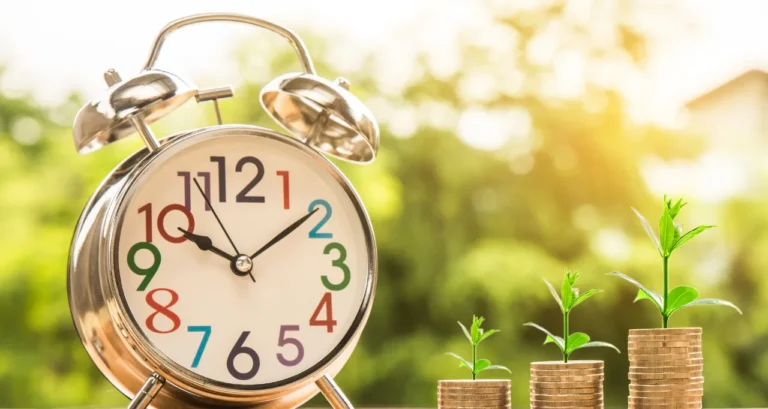America’s Best Halloweentowns: Where to Celebrate Spooky Season in 2024
Halloween is one of the most exciting and fun-filled holidays in the U.S., with activities ranging from pumpkin patches to haunted houses, trick-or-treating, and spooky parties. But some cities take the Halloween spirit to a whole new level. If you’re looking for the ultimate spooky destination this year, we’ve got you covered with the best Halloweentowns across America.
In 2024, FinanceBuzz analyzed over 75 major cities in the United States, looking at various factors such as the number of candy stores, haunted locations, Halloween events, and more. From the eerie streets of Ohio to the party-filled neighborhoods of California, let’s explore the best places to experience Halloween in full spooky style.
How Were the Best Halloweentowns Selected?
To determine the best Halloweentowns, FinanceBuzz used eight key data points to rank cities based on their Halloween spirit. These factors included:
- Candy Stores per Capita: Cities with more specialty candy stores tend to offer a more festive and unique experience for Halloween.
- Costume Shops per Capita: Access to costume shops is essential for creating unforgettable Halloween outfits.
- Halloween Parties and Events per Capita: The number of Halloween-themed parties and events in each city was measured to see where the celebrations are at their peak.
- Real Haunted Locations: Cities with historical haunted locations, both “real” and artificial, add an extra thrill to Halloween.
- Haunted House Attractions per Capita: The availability of haunted houses makes for a scarier, more exciting Halloween.
- Pumpkin Patches per Capita: Pumpkin patches are a staple of Halloween, providing the perfect backdrop for family fun and creativity.
- Fall Weather: Cooler temperatures and autumn leaves make certain cities more festive during Halloween.
- Halloween Spirit: Search volumes for Halloween-specific terms like “Halloween parties” or “costumes” were tracked to determine which cities were most excited about the holiday.
Top 10 Halloweentowns in America
| City | Candy Stores per 100k | Costume Shops per 100k | Real Haunts per 100k | Haunted Houses per 100k | Pumpkin Patches per 100k | Halloween Events | Overall Score |
|---|---|---|---|---|---|---|---|
| Toledo, Ohio | 9.0 | 3.8 | 2.6 | 4.1 | 10.6 | High | 73.4 |
| Riverside, California | 17.2 | 19.8 | 3.1 | 4.4 | 3.4 | Highest | 73.2 |
| Salt Lake City, Utah | 21.5 | 13.4 | 2.4 | 6.2 | 6.7 | Medium | 73.2 |
| Cleveland, Ohio | 17.1 | 8.5 | 1.7 | 1.9 | 8.5 | High | 70.3 |
| Oakland, California | 28.2 | 9.6 | 5.3 | 2.1 | 4.1 | High | 66.8 |
1. Toledo, Ohio
Why Toledo?
Toledo is a surprise winner, but with its combination of pumpkin patches, haunted house attractions, and Halloween events, it stands out as the ultimate Halloweentown in 2024. The city also ranks in the top five for Google searches on Halloween-related terms, indicating a strong community enthusiasm for the holiday.
- Candy Stores per 100k People: 9.0
- Haunted Houses per 100k People: 4.1
- Pumpkin Patches per 100k People: 10.6
- Search Volume for Halloween Terms: Top 3
2. Riverside, California
Why Riverside?
Located near Los Angeles, Riverside is known for its abundance of Halloween parties and events. It’s also home to a high number of costume shops, making it easy for residents to create elaborate costumes. Combine that with great weather and a variety of haunted houses, and Riverside becomes a top Halloween destination.
- Halloween Parties per 100k People: Highest in the U.S.
- Costume Shops per 100k People: 19.8
- Fall Weather Comfort Score: 8.9
3. Salt Lake City, Utah
Why Salt Lake City?
Salt Lake City takes Halloween seriously, with the highest number of haunted houses per capita in the country. It also ranks in the top 10 for costume shops and candy stores, making it the perfect place for Halloween enthusiasts who love to go all out.
- Haunted Houses per 100k People: 6.2 (highest in the U.S.)
- Costume Shops per 100k People: 13.4
4. Cleveland, Ohio
Why Cleveland?
Cleveland is a hub for Halloween celebrations, with high rankings in the number of haunted houses, pumpkin patches, and costume shops per capita. It’s also one of the top cities for Halloween-related Google searches, proving that Cleveland residents are always eager to celebrate the spooky season.
- Pumpkin Patches per 100k People: 8.5
- Search Volume for Halloween Terms: Top 5
5. Oakland, California
Why Oakland?
Oakland offers an impressive Halloween experience, particularly for candy lovers. It ranks among the top cities for candy stores per capita and features a significant number of real haunted locations, adding a spooky historical element to its Halloween festivities.
- Candy Stores per 100k People: 28.2 (fourth highest in the U.S.)
- Real Haunted Locations per 100k People: 5.3
6. Cincinnati, Ohio
Why Cincinnati?
Ohio seems to be a Halloween hotspot, with Cincinnati being the third city from the state to make it into the top 10. The city ranks highly for Halloween search terms on Google and offers a good number of pumpkin patches and haunted attractions, making it a great place to celebrate.
- Search Volume for Halloween Terms: Top 10
- Pumpkin Patches per 100k People: 8.0
7. Baltimore, Maryland
Why Baltimore?
With its rich haunted history, Baltimore ranks among the top cities for haunted house attractions and real haunted locations. This connection to the past, combined with modern Halloween events, makes Baltimore a spooky and exciting place to visit.
- Real Haunted Locations per 100k People: 4.8
- Haunted Houses per 100k People: 5.3 (third highest in the U.S.)
8. Pittsburgh, Pennsylvania
Why Pittsburgh?
Pittsburgh ranks as the top city in the country for Google searches related to Halloween. Residents of Pittsburgh are clearly excited about the holiday, and the city offers a good mix of candy stores and haunted attractions to match the enthusiasm.
- Search Volume for Halloween Terms: Highest in the U.S.
- Candy Stores per 100k People: 25.1
9. Fort Lauderdale, Florida
Why Fort Lauderdale?
Despite the hot Florida weather, Fort Lauderdale makes it into the top 10 thanks to its high number of candy stores and costume shops per capita. The city may not have the autumn chill, but it more than makes up for it with its Halloween spirit.
- Candy Stores per 100k People: 46.7 (highest in the U.S.)
- Costume Shops per 100k People: 21.7 (highest in the U.S.)
10. Providence, Rhode Island
Why Providence?
Providence offers a rich blend of history and Halloween fun, ranking highly for real haunted locations and costume shops. It’s also close to larger cities like Boston and New York, giving residents access to even more Halloween events.
- Real Haunted Locations per 100k People: 4.0
- Costume Shops per 100k People: 8.0
Conclusion
Halloween is a holiday filled with fun, fear, and festivity, and these cities bring it all together. Whether you’re in the Midwest, the West Coast, or somewhere in between, these top Halloweentowns are sure to provide the perfect backdrop for a spooky and memorable Halloween season.
If you’re in or near any of these top 10 cities, make sure to explore what they have to offer this Halloween. From haunted houses and real haunted locations to costume shops and pumpkin patches, you’ll find everything you need to get into the Halloween spirit.
FAQs
Which city is ranked the best Halloweentown in 2024?
Toledo, Ohio, is ranked as the best Halloweentown in the U.S. for 2024, thanks to its abundance of pumpkin patches, Halloween events, and haunted attractions.
Why is Riverside, California, one of the top Halloweentowns?
Riverside, California, ranks high due to its large number of Halloween parties and events per capita, as well as its many costume shops. It’s also known for its pleasant fall weather, making it a perfect place to celebrate Halloween outdoors.
What factors determine the ranking of the best Halloweentowns?
Cities are ranked based on eight key data points: candy stores, costume shops, Halloween parties/events, real haunted locations, haunted house attractions, pumpkin patches, fall weather, and overall search volume for Halloween terms.
Which city has the most haunted house attractions?
Salt Lake City, Utah, ranks highest for haunted house attractions, with 6.2 haunted houses per 100,000 people, the most in the U.S.
Why does Cleveland, Ohio, rank as a top Halloweentown?
Cleveland ranks highly due to its many pumpkin patches, haunted attractions, and high search volume for Halloween-related terms. It’s a hub for Halloween enthusiasts who love to celebrate the season.
Does Fort Lauderdale, Florida, have a strong Halloween presence despite warm weather?
Yes, Fort Lauderdale makes up for its warm weather by having the highest number of candy stores and costume shops per capita, making it a great destination for Halloween lovers.
Are there any historical or real haunted locations in these top cities?
Yes, several cities in the rankings, like Baltimore, Maryland, and Oakland, California, have a significant number of real haunted locations, adding an extra spooky element to their Halloween celebrations.






